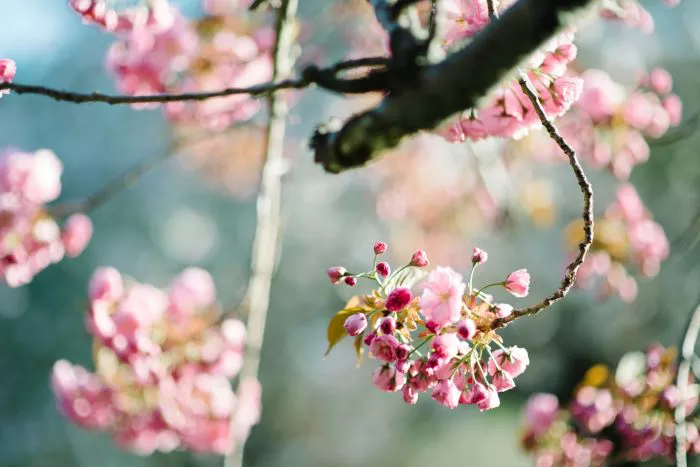Creating a beautiful flower bed in a shaded area can be a rewarding challenge. Many gardeners struggle with low-light conditions, often believing that shade limits their options. However, numerous plants thrive in these environments, offering vibrant colors and textures. This article will explore the best flowers and plants to consider for shaded flower beds, along with tips for successful planting and maintenance.
Understanding Shade Conditions
Before selecting plants, it is essential to understand the type of shade in your garden. Shade can be categorized into several types.
Full Shade: Areas that receive less than three hours of direct sunlight each day. These spots are often found under dense tree canopies or on the north side of buildings.
Partial Shade: Areas that receive three to six hours of sunlight daily. These areas may experience some morning sun or filtered light through trees.
Dappled Shade: Areas that receive light filtered through tree leaves, creating a mix of sun and shade throughout the day.
Understanding these conditions will help you choose the right plants for your shaded flower bed.
Choosing the Right Plants
When selecting plants for a shaded flower bed, consider their light requirements, growth habits, and compatibility with your garden’s soil and climate. Here are some excellent options for shaded areas.
Hostas: Hostas are popular shade-loving perennials known for their lush foliage. They come in various sizes, shapes, and colors, making them versatile for different garden designs. Hostas thrive in moist, well-drained soil and can tolerate full shade.
Ferns: Ferns are excellent choices for shaded areas, adding texture and greenery to your flower bed. Varieties such as the Japanese painted fern and maidenhair fern thrive in low-light conditions. They prefer moist, well-drained soil and can add a natural, woodland feel to your garden.
Astilbe: Astilbe is a perennial that produces feathery plumes of flowers in shades of pink, white, and red. They thrive in partial to full shade and prefer consistently moist soil. Astilbe can add a pop of color to your shaded flower bed.
Bleeding Heart: This perennial is known for its unique heart-shaped flowers that dangle from arching stems. Bleeding hearts thrive in partial shade and prefer moist, well-drained soil. They bloom in spring and early summer, providing early-season interest.
Pulmonaria: Also known as lungwort, this perennial features attractive spotted leaves and clusters of blue or pink flowers in early spring. Pulmonaria thrives in full to partial shade and prefers moist, rich soil. It is an excellent choice for adding early color to your garden.
Heuchera: Commonly known as coral bells, Heuchera is valued for its colorful foliage, which can range from deep purple to bright lime green. They thrive in partial shade and are drought-tolerant once established, making them a low-maintenance option for shaded areas.
Tiarella: Also known as foamflower, Tiarella produces delicate white or pink flowers on tall spikes. It thrives in partial to full shade and prefers moist, well-drained soil. Tiarella is an excellent ground cover that can help suppress weeds.
Lungwort: This perennial is known for its attractive foliage and early spring flowers. Lungwort thrives in full to partial shade and prefers moist, well-drained soil. It is a great option for adding beauty to shady spots.
Impatiens: For annual color in shaded flower beds, consider impatiens. These plants produce vibrant blooms in various colors and thrive in full shade. They are perfect for adding seasonal color to your garden.
Caladiums: These tropical plants are known for their stunning foliage, which comes in various colors and patterns. Caladiums thrive in partial shade and can add a striking visual element to your shaded flower bed.
Planting Tips for Shaded Flower Beds
Once you have selected the right plants for your shaded flower bed, follow these planting tips to ensure their success.
Soil Preparation: Start by preparing the soil. Remove any weeds, rocks, or debris from the planting area. Amend the soil with organic matter, such as compost, to improve drainage and fertility.
Planting Depth: When planting, make sure to dig holes that are twice as wide as the plant’s root ball but no deeper than the root ball itself. This encourages healthy root growth.
Spacing: Consider the mature size of each plant when spacing them in the flower bed. Overcrowding can lead to competition for nutrients and water, so provide adequate space for each plant to thrive.
Watering: After planting, water the plants thoroughly to help them settle into their new environment. Continue to monitor moisture levels, as shaded areas can retain moisture longer than sunny spots.
Mulching: Apply a layer of mulch around the plants to help retain moisture, suppress weeds, and regulate soil temperature. Organic mulches, such as shredded bark or wood chips, are excellent choices.
Maintenance of Shaded Flower Beds
Maintaining a shaded flower bed requires attention to watering, fertilizing, and pruning.
Watering: While shaded areas may retain moisture, it is essential to monitor the soil regularly. Water the plants as needed, especially during dry spells.
Fertilizing: Use a balanced, slow-release fertilizer in the spring to provide essential nutrients. Follow the manufacturer’s instructions for application rates.
Pruning: Regularly deadhead spent flowers to encourage new blooms and maintain the plant’s appearance. Prune back any dead or damaged foliage to promote healthy growth.
Weed Control: Keep an eye on weeds that may compete with your plants for resources. Hand-pulling or using mulch can help control weed growth.
Conclusion
Creating a shaded flower bed can be a fulfilling gardening project. By selecting the right plants that thrive in low-light conditions, you can create a vibrant and beautiful space. Understanding the different types of shade, choosing appropriate plants, and following proper planting and maintenance techniques will ensure your shaded flower bed flourishes. With careful planning and attention, your garden can become a delightful haven of color and texture, even in the shade.


